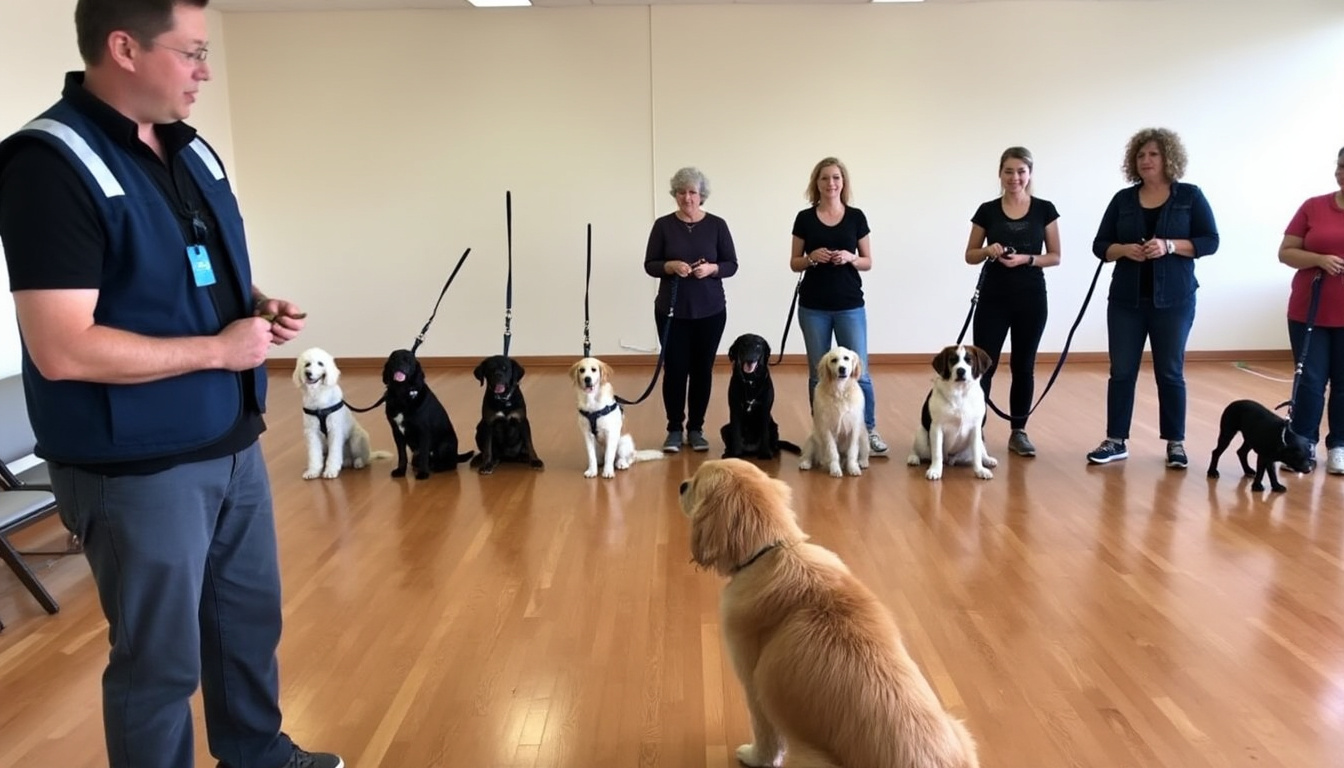How to establish a dog training program?
Learning to train your dog is an essential adventure for any owner who cares about establishing a harmonious relationship with their four-legged companion. The process of dog training is not limited to simple obedience; it also encompasses the development of good manners and the management of undesirable behaviors. For this, it is crucial to create a dog training program tailored to the specific needs of each dog breed. Considering the characteristics of each animal will allow for the use of effective dog learning methods, promoting clear communication between the dog and its owner.
Positive training techniques, based on rewarding desired behaviors, are recommended and can transform learning into a moment of shared enjoyment. Whether you want to address behavioral issues or create a basic obedience program, a structured approach can make all the difference. Resources such as dog training books and courses for dog trainers can enhance your skills and enrich your experience.
The Basic Principles of Dog Training
Dog training is based on a few fundamental principles that guide each learning session. Knowing these principles is the first step towards establishing a successful dog training program.

Goal and Consistency
A dog training program should start by defining clear goals. These can vary, ranging from learning basic commands like “sit” and “lie down” to managing undesirable behaviors such as excessive barking or aggression. Once these goals are identified, it is crucial to be consistent in the application of messages and methods. By using the same words, gestures, and intonations during learning sessions, the dog will be able to understand what is expected of it.
Choosing the Right Learning Method
Selecting the learning method is equally important. Dog learning methods based on rewarding desired behaviors with treats, petting, or praise are generally the most effective. By offering your four-legged companion educational toys for dogs during learning moments, you can encourage motivation and make the sessions more enjoyable.
Adapting Education to the Breed
Understanding that each dog breed may have varied needs and abilities is essential. For example, a German Shepherd requires intense mental and physical stimulation, while a French Bulldog may be more suited to gentle training focused on patience. Adapting your training program according to these specifics is key to successfully training your dog.
Structuring the Training Program
Structuring a dog training program involves breaking the process down into several key steps, which helps organize and make follow-ups more straightforward.

Learning Modules
An effective program might include different learning modules such as:
- Module 1: Basic Commands – Introduction to fundamental orders that will ensure safety and mutual respect.
- Module 2: House Training – Teaching the dog to behave properly during outings.
- Module 3: Socialization – Helping your dog interact positively with other dogs and humans.
- Module 4: Managing Undesirable Behaviors – Working on the dog’s natural instincts and correcting annoying behaviors like barking for attention.
- Module 5: Breed-Specific Activities – For working or sports breeds, include specific exercises such as tracking or agility.
Regular Assessment
Integrating regular assessment moments into your program allows you to adjust methods and add enhancements to maximize effectiveness. A monthly assessment can reveal notable improvements or areas needing adjustments. By closely observing your dog’s progress, you can refine the techniques used to better meet its needs.
Incorporating Digital Tools
Nowadays, there are also online dog training courses and applications dedicated to dog education. These tools can offer a variety of practical video exercises filled with tips on positive training techniques, making dog training even more accessible. Recognized brands like PetSafe even offer training equipment such as training collars to reinforce learning sessions.
Behaviors to Monitor
Problematic behaviors in dogs can arise for various reasons, ranging from stress to a lack of stimulation. Identifying and managing these behaviors should be part of your dog training program.
Review of Undesirable Behaviors
The key to rectifying undesirable behaviors often lies in understanding their origin. Excessive barking, for example, may stem from boredom, anxiety, or a way to attract attention. Resources such as dog training books can provide guidance on how to manage these situations, with proven techniques.
Possible Solutions
In many cases, establishing a well-defined routine can greatly help. Thus, regular walks and interactive play are essential. Simple activities, such as dog board games or agility sessions, can also address behavioral challenges while making training fun and engaging.
Consultation with a Professional
Finally, for more complex behavioral issues, consulting a professional remains a viable option. Many specialized dog trainers will know how to adapt your dog training program to the specific needs of your dog. Reaching out for additional training like that offered by the École du Chien can also be very beneficial.
Reinforcement and Follow-up
After implementing your dog training program, long-term support is essential to establish sustainable behaviors. Regular follow-up will ensure that the training is ongoing and that your dog remains on track.
Importance of Consistency
Positive reinforcement must be consistent; each session reinforces the teachings. Thus, it is important to remember that rewards should be given immediately after the desired action to maximize the success of any desired behavior.
Community and Support
Participating in support groups or online forums can also enhance your learning. Local dog owner groups like those described on Nature de Chien can be ideal platforms for sharing experiences and gaining practical advice.
Ongoing Progress Evaluation
Likewise, implementing regular evaluations with a professional will help you track each progress and readjust goals if necessary. Many trainers and courses offer evaluations that can become key elements in maintaining an effective dog training program.
Ultimately, establishing a dog training program will require time, patience, and commitment. The learning journey is as rewarding as the destination where a strong and respectful bond can form with your dog.





